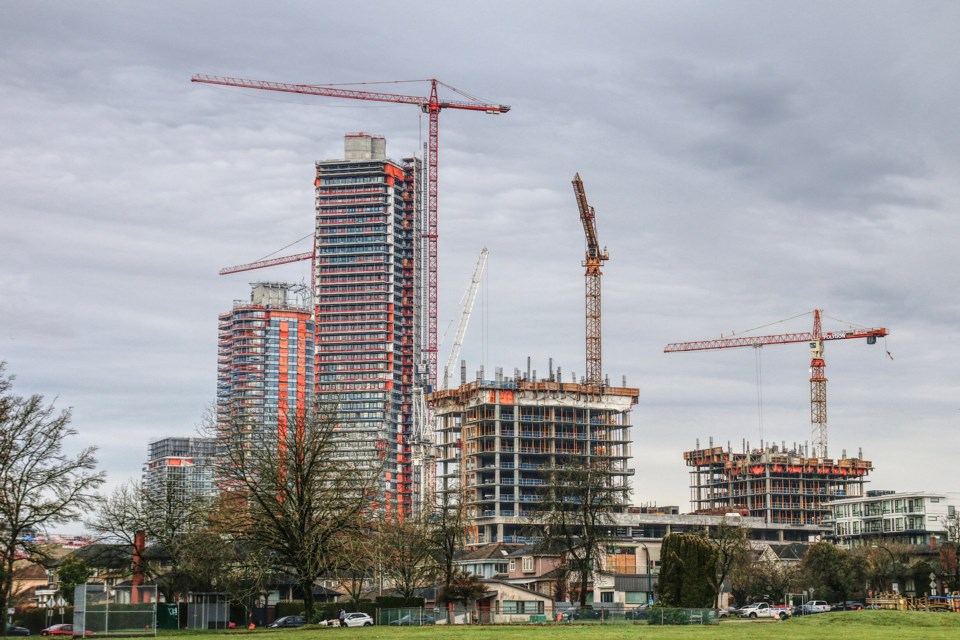As the new year gets underway, market observers and participants are looking ahead at how sa国际传媒’s real estate sector might fare in 2025.
There are a lot of factors to consider, including political and fiscal uncertainty at the federal level; the continued implementation and enforcement of provincial housing policies; interest rate decisions by the Bank of sa国际传媒 and the U.S. Federal Reserve; the threat of U.S. tariffs; a lower loonie; and tighter immigration—not to mention challenges faced by countries such as India and China, and local market trends, including weak presales, stabilizing rents and tapering construction.
“It’s a lot of factors that can play into each other. They can multiply each other, or they can cancel each other out, which is why I am so good at predicting the past,” said Andy Yan, director of the City Program at Simon Fraser University.
Real estate markets in sa国际传媒 continue to evolve, with changes occurring on the three fronts of supply, demand and finance. On the supply side, provincial policy is aimed at accelerating transit-oriented density. On the demand side, punitive taxes related to “speculation” and “flipping” continue to be implemented and enforced. And the finance side depends on credit markets both domestic and global.
All of this makes prognostication a difficult task when looking forward to the year ahead.
“I think it’s one of those strap-in-and-watch kinds of situations,” said Yan.
BC NDP expected to continue affordability efforts
The province is expected to continue its efforts to boost housing supply and tackle unaffordability.
During the election campaign, Eby proposed an initiative to fund 40 per cent of select first-time home purchases. He also indicated doubling the speculation and vacancy tax.
One new measure that came into effect Jan. 1 is a provincial “home-flipping” tax, by which anyone who sells a home within a year after purchasing it pays a 20-per-cent tax on their profit, with the rate falling to 10 per cent after 18 months and zero after two years.
A recent Statistics sa国际传媒 study found that 2.8 per cent of the province’s residential properties sold in the years spanning 2019-2021 (the most recent data available) had been owned by their sellers for less than a year.
By comparison, it was more common for residential properties to be re-sold in the second year of ownership. For instance, 5.3 per cent of properties sold in 2021 and 6.2 per cent of those sold in 2019 had been held by their seller for one to less than two years.
On the supply side, the new BC NDP term could see the province continue its focus on missing-middle homes and transit-oriented density, as well as on ensuring municipalities proceed with densification.
Changes abound at federal and international levels
Federally, polls widely predict the governing Liberal party could be replaced by the Conservatives in the 2025 election, which could affect federal housing policy and funding.
It would also affect relations with and policy regarding the U.S.
Incoming U.S. president Donald Trump has threatened to impose a 25-per-cent tariff on all goods entering the U.S. from sa国际传媒.
Yan said the diversity of the sa国际传媒 economy means tariffs would affect regional real estate markets differently. He said the U.S. has its own housing challenges, as well as a reliance on Canadian lumber exports for home construction and other uses.
A leadership change could also bring different immigration policies. Already, the Liberal government has temporarily banned foreign property buyers and curbed immigration by international students and others, curtailing real estate demand. A Conservative government could go even further in reducing immigration levels.
Monetary policy and forex will play significant roles
Whether interest rates continue their downward trajectory will also affect sa国际传媒’s housing markets. Royal Bank of sa国际传媒, for example, forecasts a two-per-cent policy rate by mid-2025. The key rate currently sits at 3.25 per cent.
Lower interest rates make mortgage financing cheaper and therefore support real estate activity, although they can also lead to inflation and price appreciation, worsening affordability.
Meanwhile, the Canadian dollar is depreciating vis-a-vis the greenback.
“One reason the [Canadian] dollar is weakening, but not the only reason, is the threat of tariffs, which would be devastating,” said Thomas Davidoff, professor of real estate finance with University of British Columbia.
“This would certainly make housing cheaper, but it would make housing cheaper because we’d be in a heinous recession.”
Davidoff said the exchange rate is something to watch. The U.S. Fed and the Bank of sa国际传媒 are diverging in their respective pace of interest rate reductions, with the former concerned about lingering inflation. A weaker loonie boosts the visitor economy and strengthens exports, but those same exports may get battered by Trump tariffs.
“I think it’s going to be a challenging year for the Canadian economy,” Davidoff said.
Within that context, local trends continue.
Davidoff noted that there is significant weakness in the presale market, and that more rental housing and condo development will hinge on further interest rate reductions.
Still, rental prices have in many cases declined from their peaks, and affordability could improve if household incomes grow and immigration moderates.
“My best guess is that affordability will improve, certainly on the rental side with the pause in the rate of immigration,” he said.
Davidoff said the key metric is the ratio of homes and people, and that it may gradually balance in sa国际传媒 as more supply comes online in 2025 and beyond.
“A lot of rental supply is coming on the market in the next couple of years, so that should augment the effect we’ve already had of an increasing ratio of units to people, as opposed to a decreasing ratio that we had for so long,” he said.



